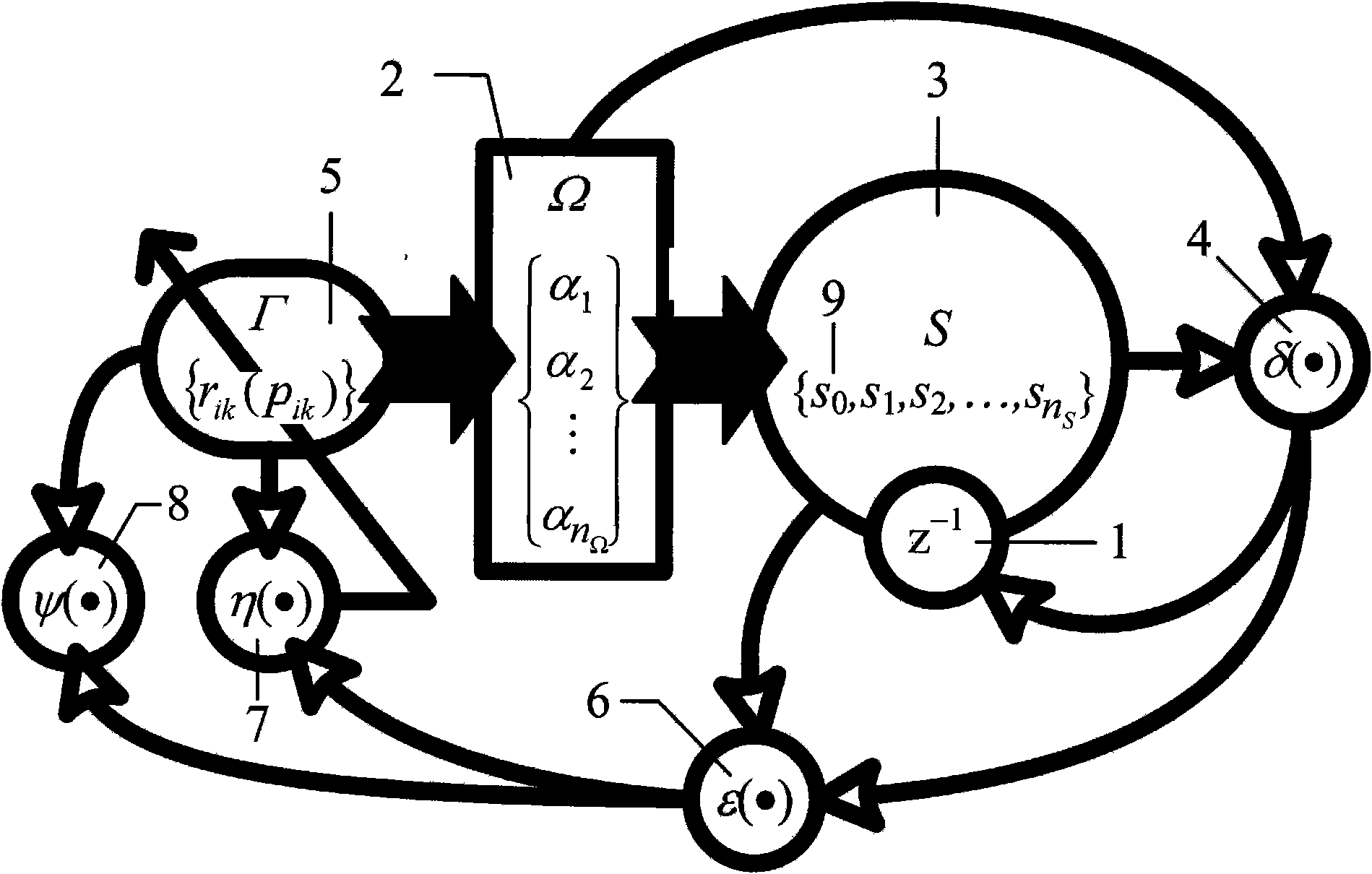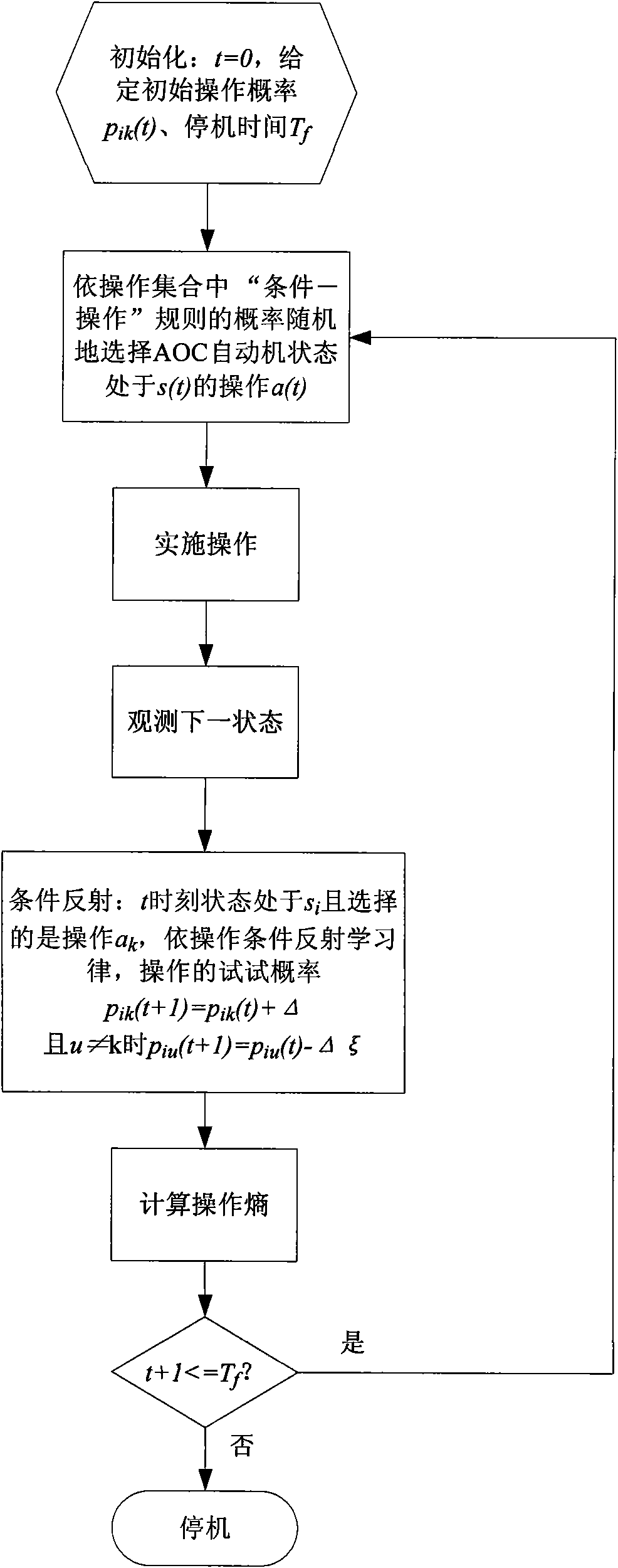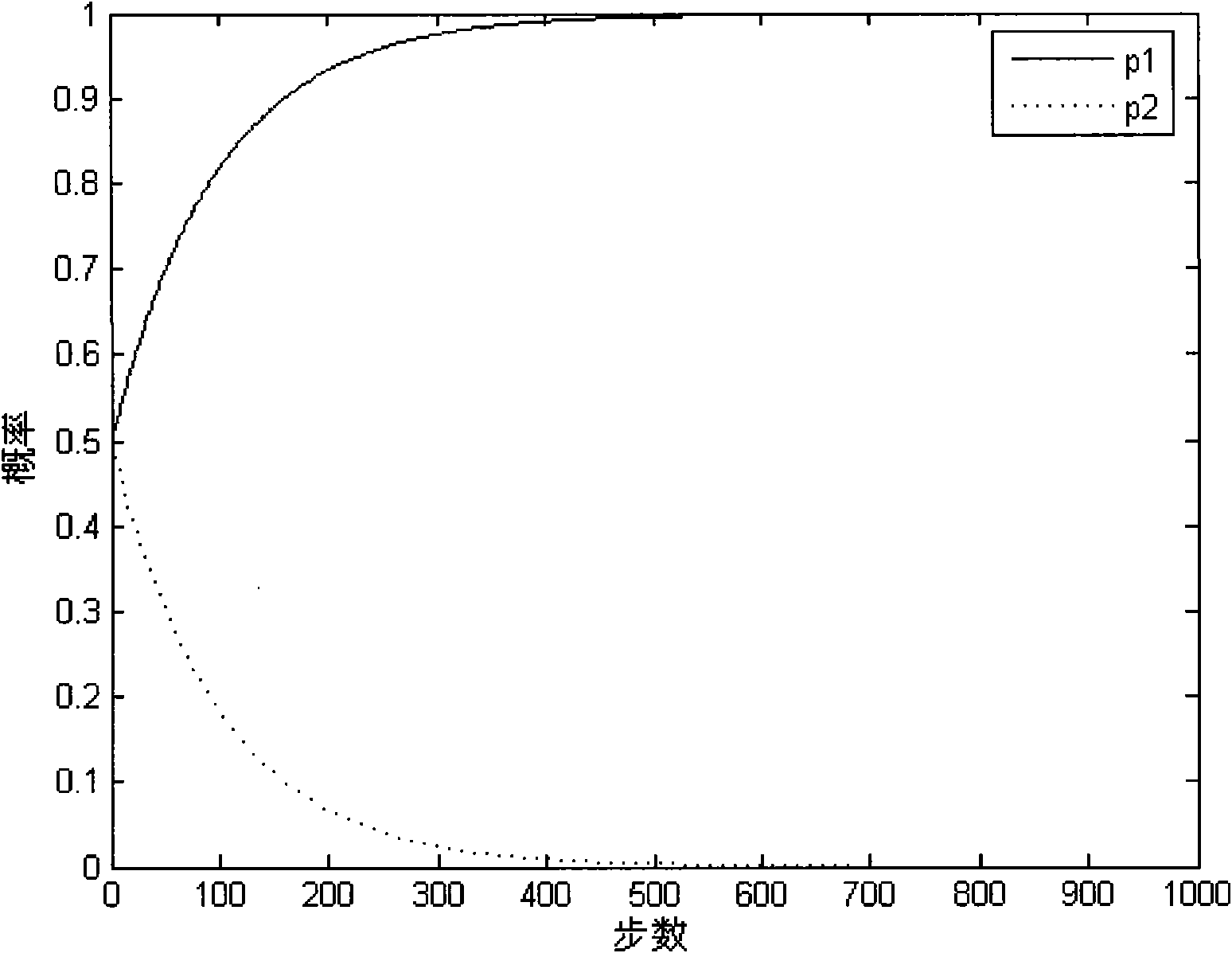Self-organizing operating conditioned response automata and application in realization of intelligent behavior thereof
A technique for operating conditioning reflexes and automata, applied in the field of bionic automata
- Summary
- Abstract
- Description
- Claims
- Application Information
AI Technical Summary
Problems solved by technology
Method used
Image
Examples
Embodiment 1
[0058] Embodiment 1: A minimal system—a small white mouse with learning ability, simulating Skinner's small white mouse experiment. Briefly describe Skinner's experiment with white mice: Put a white mouse in the Skinner box and set up a lever. The structure of the box excludes all external stimuli as much as possible. The mouse can move freely in the box, and when it presses the lever, a ball of food will fall into the plate under the box, and the mouse can eat the food. There is a device outside the box to record the movements of the animals. The mice will learn to keep pressing the lever and get food rewards through their actions. This experiment implements Skinner's mouse experiment by autonomously operating conditioned reflex automata. The mouse has two operational behaviors, one is to press the lever α 1 , the other is not pressing the lever α 2 , that is, the set of operations Ω={α 1 , α 2}, and the probabilities are denoted by p1 and p2 respectively. Its state se...
Embodiment 2
[0073] Embodiment 2: a robot pigeon with learning ability, simulating Skinner's pigeon experiment. In this experiment, the robot pigeon gets food when it pecks the red button (positive reinforcement stimulus), no stimulus when it pecks the yellow button, and gives electric shock when it pecks the blue button (negative reinforcement stimulus). At the beginning, the pigeon pecks the red, yellow and blue buttons is random. After a while, the pigeons pecked at the red button significantly more than the other two buttons. Define a 3-operation 3-state autonomous operation conditioned reflex automaton for the robot pigeon, whose operation set Ω={α 0 , α 1 , α 2}, whose elements are pecking red button α 0 , peck the yellow button α 1 and peck the blue button α 2 , the probabilities are denoted by p0, p1, p2 respectively. State set S={s 0 ,s 1 ,s 2}, that is, zero starvation state (non-starvation state) s 0 , half-starved state s 1 , starvation state s 2 , the state transi...
Embodiment 3
[0099] Embodiment 3: The balance control of the two-wheeled self-balancing robot is realized through the autonomous operation conditioned reflex automaton. Two-wheeled upright robots can freely move left and right on flat ground. When the deflection angle exceeds ±12°, the robot will lose its balance. The state set of the AOC automaton designed for this purpose is the robot deflection angle, including 6 states: θ=0°, 0°12°, use s respectively 0 , s 1 , s 2 , s 3 , s 4 , s 5 , s 6 to represent, therefore, the state set S={s 0 ,s 1 ,s 2 ,s 2 ,s 3 ,s 4 ,s 5 ,s 6 ,}. Its operation set Ω={α 0 , α 1 , α 2}, including not moving α 0 , move to the right by α 1 , move to the left by α 2 . The state transition rules are as follows:
[0100] δ(s 0 ×α 0 )=s 0 δ(s 0 ×α 1 )=s 3 δ(s 0 ×α 2 )=s 1
[0101] δ(s 1 ×α 0 )=s 2 δ(s 1 ×α 1 )=s 0 δ(s 1 ×α 2 )=s 2
[0102] δ(s 2 ×α 0 )=s 5 δ(s 2 ×α 1 )=s 1 δ(s 2 ×α 2 )=s 5
[0103] δ(s ...
PUM
 Login to View More
Login to View More Abstract
Description
Claims
Application Information
 Login to View More
Login to View More - R&D
- Intellectual Property
- Life Sciences
- Materials
- Tech Scout
- Unparalleled Data Quality
- Higher Quality Content
- 60% Fewer Hallucinations
Browse by: Latest US Patents, China's latest patents, Technical Efficacy Thesaurus, Application Domain, Technology Topic, Popular Technical Reports.
© 2025 PatSnap. All rights reserved.Legal|Privacy policy|Modern Slavery Act Transparency Statement|Sitemap|About US| Contact US: help@patsnap.com



